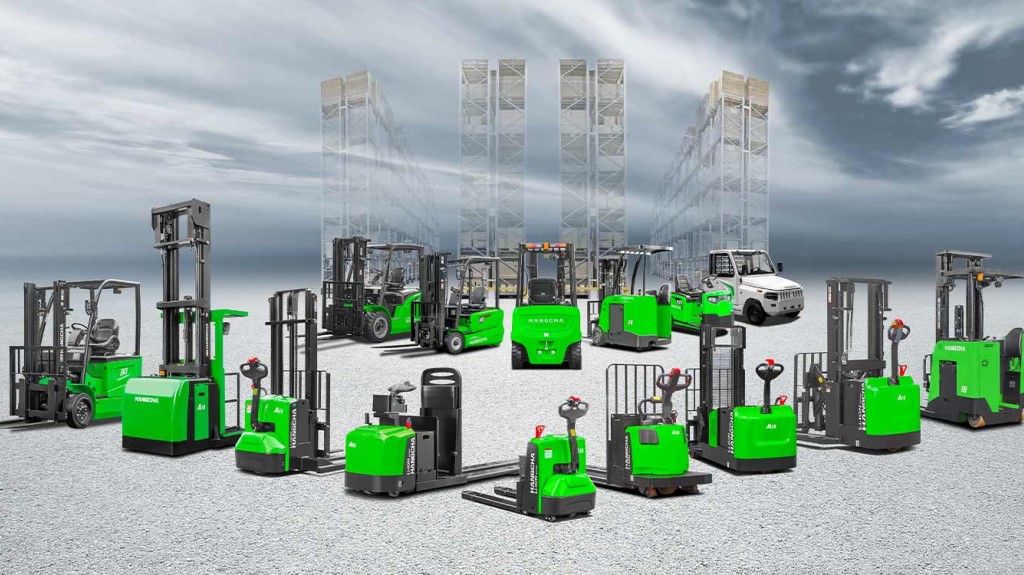Lithium vs Lead-Acid Forklift Batteries: When it comes to powering your forklift fleet, choosing the right battery technology is essential for maximizing efficiency, minimizing downtime, and reducing long-term costs.
In this post, we’ll explore the key differences between lithium-ion and lead-acid forklift batteries, helping you understand which option is best suited for your business. From charging times and energy efficiency to safety and maintenance, we’ll break down the benefits and considerations for each, so you can make an informed decision for your operation.
- What Are Lead-Acid Forklift Batteries?
- What Are Lithium Forklift Batteries?
- Charging Differences: Lithium vs Lead-Acid
- Cost Comparison
- Safety and Environmental Considerations
- Best Use Cases for Each
- Lithium Forklift Battery FAQ
- Why RIGO Lift Recommends Lithium for Modern Operations
- Conclusion
Looking for help choosing the best forklift battery for your situation? Contact Ri-Go Lift today.
Lithium vs Lead-Acid Forklift Batteries
1. What Are Lead-Acid Forklift Batteries?
Watch the above video to learn more about how a lead-acid battery works.
Lead-acid batteries were the most widely used forklift battery over the last four decades. In fact, their technology traces its origins back to the mid-1800s. They are also called “wet cell batteries,” a term used due to their inexpensive nature compared to most other batteries.
How Lead-Acid Batteries Work
Lead-acid forklift batteries generate electricity through a chemical reaction between lead plates and an electrolyte solution. The solution is made up of sulfuric acid and distilled water.
Electrochemical reaction: Electricity is generated in the battery when ions transfer from the sulfuric acid in the electrolyte to the negative lead plate.
Power delivery: The electrical energy that powers the forklift is provided by this reaction.
Key Components of a Lead-Acid Battery
Lead-acid forklift batteries are made up of several parts that work together to produce electricity:
- Cells: These are the individual units of the battery that hold the internal parts.
- Bars: These connect the cells together and help conduct the electrical current.
- Plates: This includes both positive and negative lead plates. The positive plates are made of lead dioxide.
- Cables: These carry the electricity from the battery to the forklift motor.
- Electrolyte: Electrolyte is composed of a 30% to 50% solution of sulfuric acid and distilled water. It is required for the chemical reaction to happen.
Strengths and Weaknesses of Lead-Acid Batteries
As with any technology, lead-acid batteries have strengths and weaknesses.
Strengths:
- Less up-front cost: They are less costly than lithium batteries.
- Long history of industry use: Lead-acid batteries are a known quantity and are considered to be reliable by technicians and operators.
Weaknesses:
- Slow recharging: A lead-acid battery charges in 8 hours or more, along with cooling time.
- Needs frequent watering and maintenance: It needs regular inspections and needs to be filled with proper fluid levels.
- Shorter lifespan: Typically, lead-acid batteries have a shorter lifespan than lithium batteries, meaning they will need to be replaced more frequently.
2. What Are Lithium-Ion Forklift Batteries?
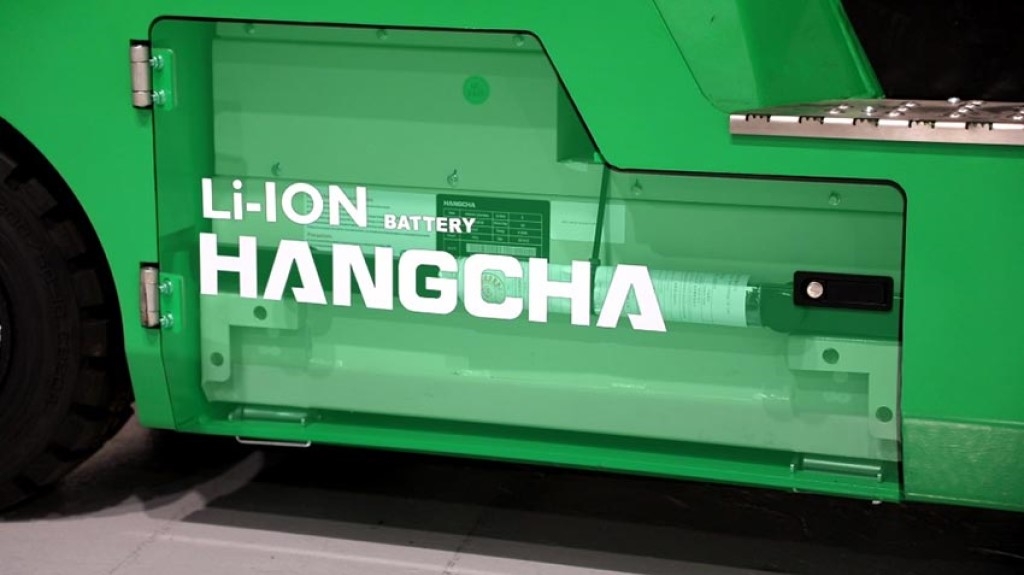
Lithium vs Lead-Acid Forklift Batteries: Although lithium-ion batteries cost more to buy, their advantages compensate for the purchase price.
Lithium-ion batteries have been common in consumer products like laptops and smartphones for decades. They have more recently emerged as the go-to battery technology for forklifts, because they perform, save energy, and are convenient.
How Lithium-Ion Batteries Work
Lithium-ion forklift batteries generate electricity through a chemical reaction between lithium ions moving back and forth between two materials — the anode and the cathode.
Discharge process: Lithium ions with a positive charge travel from the anode to the cathode through the separator during usage. This movement generates an electric current.
Battery chemistry: Lithium iron phosphate (LiFePO₄) is the most common lithium battery chemistry used for forklifts. It’s known for its stability, safety, and lengthy cycle life.
Major Components of a Lithium-Ion Battery
Lithium-ion forklift batteries use sophisticated components that together produce and manage electrical energy:
- Cathode: The cathode retains lithium ions and releases them upon discharge.
- Anode: The anode accumulates lithium ions during battery charging.
- Electrolyte (lithium): The electrolyte enables the movement of lithium ions between the anode and cathode.
- Separator: The separator prevents direct contact of the anode and cathode but permits movement of ions.
- Current collectors (positive and negative): These supply electric current to and from the outer forklift circuit.
Advantages and Limitations of Lithium-Ion Batteries
Although lithium-ion batteries cost more to purchase, their advantages regularly compensate for the higher purchase price, especially for high-cycle applications.
Benefits:
- Fast charging: Lithium forklift batteries typically fully charge in 2 hours; no cooling time required.
- Maintenance-free: They don’t need watering, cleaning, or equalizing.
- Longer lifespan: They will last 2–4 times as long as lead-acid batteries.
- Opportunity charging: They can be easily topped up between shifts, which makes them ideal for multi-shift operations.
- Smart energy use: They give you better power retention and less wasted energy.
Drawbacks:
- Higher upfront cost: They are more expensive to purchase initially than lead-acid batteries.
- May be charger-specific: Some need special chargers or forklift upgrades.
Watch the following video to learn more about lithium-ion batteries.
Lithium forklift batteries typically fully charge in 2 hours with no cooling time required.
3. Charging Differences: Lithium vs Lead-Acid
Charging time and flexibility are the main differences between lithium-ion and lead-acid forklift batteries. Here’s how they compare:
Lead-Acid Charging
Lead-acid forklift batteries require longer charging times and strict charging schedules:
- Lead-acid batteries require 6 to 8 hours to fully charge.
- Following charging, they require an additional 6 to 8 hours of cooldown time before they can be safely operated.
- They are well-suited to single-shift operations, where the battery can be recharged overnight without disrupting work.
- Opportunity charging is not recommended for lead-acid batteries, as topping up the charge during the day can damage the battery and shorten its life.
Under normal 40-hour-per-week usage, lead-acid batteries will last 3 to 5 years or approximately 1,000 to 1,500 charging cycles.
Lithium-Ion Charging
Lithium-ion forklift batteries offer much faster charging and greater flexibility:
- Lithium-ion batteries are fully charged in just 1 to 2 hours, with no requirement for a cooling-down period.
- The batteries are specially designed for opportunity charging, i.e., they can be safely charged within short breaks of 15 to 30 minutes throughout the day.
- They are perfect for multi-shift operations because one lithium-ion battery usually covers up to three shifts in a day.
- Lithium-ion batteries have up to four times the energy of lead-acid batteries and are about 30% more efficient in terms of energy.
A lithium-ion battery will last from 2,000 to 3,000 charge cycles, or about 7 to 10 years of average use, if properly maintained.
Summary Chart: Lithium vs Lead-Acid Forklift Batteries
| Feature | Lead-Acid Battery | Lithium-Ion Battery |
|---|---|---|
| Charging Time | 6–8 hours + 6–8 hour cooldown | 1–2 hours with no cooldown |
| Opportunity Charging | Not recommended | Ideal – can charge during short breaks |
| Best Use Case | Single-shift operations | Multi-shift operations |
| Energy Efficiency | Standard efficiency | Stores 4× more energy; 30% more efficient |
| Lifespan | 3–5 years (1,000–1,500 cycles) | 7–10 years (2,000–3,000 cycles) |
4. Cost Comparison
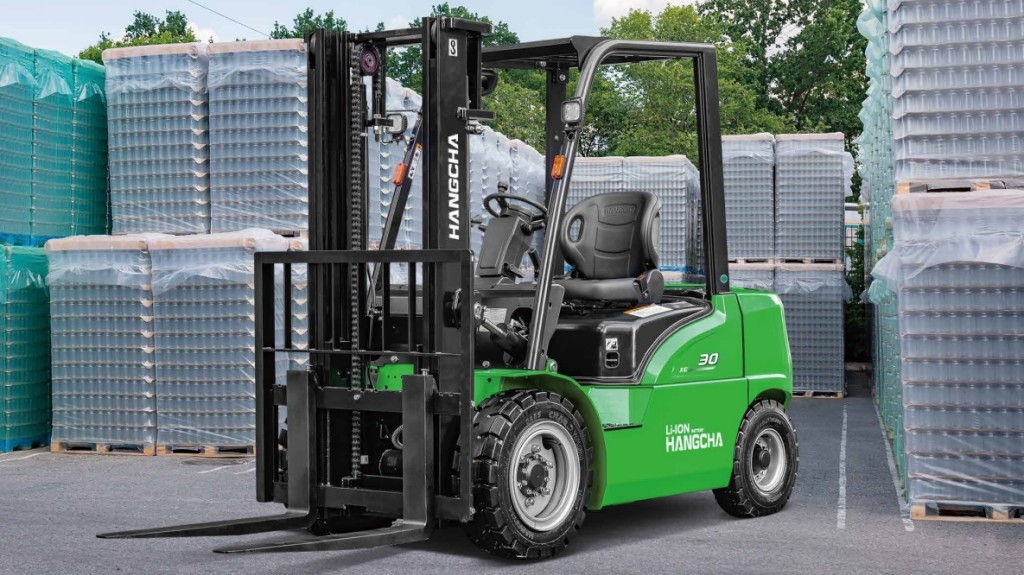
Lithium forklifts are more cost-effective in the long run due to their efficiency and durability.
When deciding between lead-acid and lithium-ion forklift batteries, it’s important to look beyond just the initial price. While lithium-ion batteries cost more upfront, they can lead to major savings over time, especially for businesses that run multiple shifts.
Initial Cost vs Long-Term Value
Lithium-ion forklift batteries are more expensive upfront than lead-acid batteries. However, they are more cost-effective in the long run due to their efficiency and durability.
Ideal for Multi-Shift Operations
Lithium-ion batteries are a great choice for medium to large businesses that operate multiple shifts. These batteries hold a charge longer and recharge faster, reducing downtime and labour costs.
ROI in Under 3 Years
Many businesses report a return on investment (ROI) within 36 months after switching to lithium-ion batteries. Lower maintenance and fewer battery replacements contribute to faster cost recovery.
Energy Efficiency Adds Up
Lithium-ion forklift batteries are about 40% more energy efficient than lead-acid options. This improved efficiency helps businesses cut down on electricity costs over time.
Longer Lifespan, Fewer Replacements
Lithium-ion batteries are built to last longer, typically lasting 7 to 10 years compared to 3 to 5 years for lead-acid. Their extended lifespan reduces replacement costs and waste.
Performs Well in Cold Conditions
Unlike lead-acid batteries, lithium-ion models work well in cold environments. This makes them a smart investment for outdoor or refrigerated warehouse operations.
Cost Summary: Lithium vs Lead-Acid Forklift Batteries
| Feature | Lead-Acid Battery | Lithium-Ion Battery |
|---|---|---|
| Initial Cost | Lower upfront cost | Higher upfront cost |
| Energy Efficiency | Standard efficiency | 40% more energy efficient |
| Lifespan | 3–5 years | 7–10 years |
| Maintenance | Requires regular maintenance | Minimal maintenance required |
| Charging Time | 6–8 hours (plus cooldown) | 1–2 hours (no cooldown) |
| Cold Tolerance | Limited cold tolerance | Works well in cold environments |
5. Safety and Environmental Considerations
Battery safety plays a big part in overall forklift safety. Many accidents and safety problems occur during battery handling, particularly during battery moving or the watering process. Understanding the risks of different battery types can reduce the risks of injury, as well as environmental damage.
Lead-Acid Battery Safety
Lead-acid batteries contain highly dangerous chemicals, i.e., sulfuric acid and lead, that are extremely harmful to operators and the environment.
The sulfuric acid is capable of causing extensive burns to the skin and eyes. For their protection, your operators are required to use personal protective gear (PPE) as listed below:
- Splash-proof goggles
- Acid-proof aprons
- Face shields
- Rubber gloves
Lead-acid batteries are highly explosive, especially while they are being charged. If the ventilation in the charging area is poor, then this will increase the likelihood of explosions.
In order to reduce the risk, it is recommended to install hydrogen sensors in the areas where the charging and storage of lead-acid batteries take place.
Lithium-Ion Battery Safety
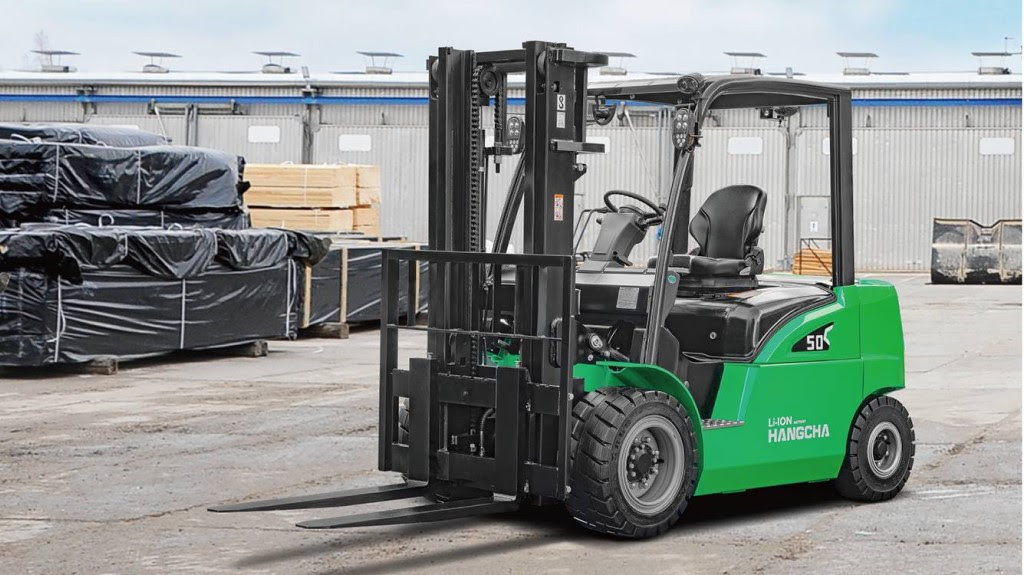
You do not need to open the battery compartment to water or service a lithium battery.
Lithium-ion forklift batteries are much safer than lead-acid batteries, posing fewer health risks and needing less specialized protective gear.
Lithium-ion batteries are totally sealed, and operators do not need to open the battery compartment to water or service the battery. This removes the risk of electrolyte spills, toxic fumes, and other hazardous conditions.
No personal protective equipment is needed in the process of normal maintenance of lithium-ion batteries, which makes them simpler and cheaper to use for warehouse operations.
This reduced risk of explosion and leakage makes lithium-ion batteries a safer choice, both for the environment and the user.
6. Best Use Cases for Each
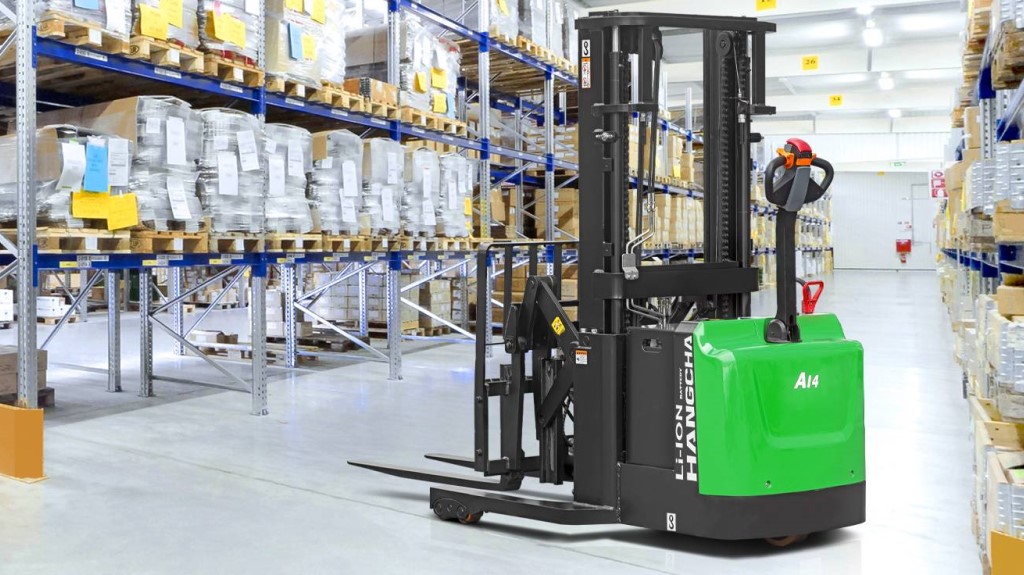
Lithium vs Lead-Acid Forklift Batteries: For multi-shift operations, lithium-ion batteries are the best option.
Choosing the right forklift battery is a matter of your company’s specific needs and operational demands. Here’s when lead-acid batteries can still be an adequate choice and when lithium-ion batteries indisputably take the lead.
When Lead-Acid Batteries Might Still Be Appropriate
Lead-acid batteries might still be an acceptable option for certain operations, like in budget-restricted situations or businesses with simple, single-shift needs.
- Budget-conscious operations: Lead-acid batteries are less expensive to buy initially, so they may be a solid option for budget-conscious businesses.
- Single-shift operations: When your operation runs one shift per day, the longer lead-acid battery charging time may be less of a drawback.
- Low uptime requirements: For operations where high uptime and high battery turnover rates are not a high priority, lead-acid batteries can offer low requirements at a lower cost.
When Lithium-Ion Batteries Are the Clear Decision
For businesses with more intensive requirements, such as multi-shift operations or those with regular uptime demands, lithium-ion batteries are the best option.
- Multi-shift operations: Lithium-ion batteries are best suited for operations that have multiple shifts per day. Their rapid charging and opportunity charging allow them to keep forklifts charged and ready to operate at all times.
- High uptime needs: If your operation demands forklifts to run for long hours without a rest, the fast charging and long life of lithium-ion batteries make them a preferable option.
- Automation: In automated warehouses or in systems with heavy material handling requirements, lithium-ion batteries are more appropriate due to their reliability, ultra-fast charging, and minimal maintenance.
7. Lithium Forklift Battery FAQ
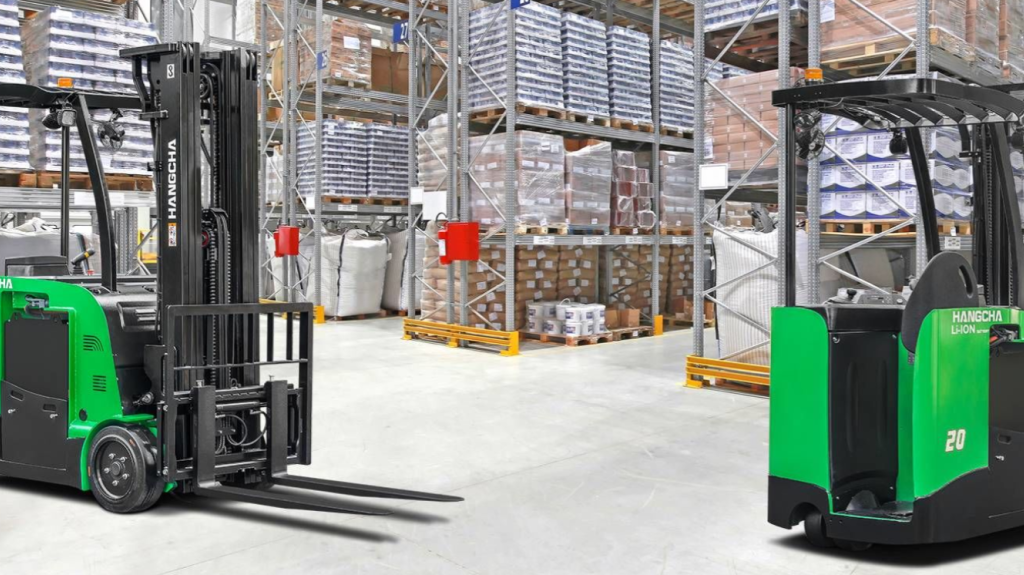
Lithium vs Lead-Acid Forklift Batteries: Lithium batteries never lose power as they discharge, unlike lead-acid batteries.
Would you like to get all your lithium-ion forklift battery questions answered? You’re not alone. Below are some of the most common questions we receive from companies contemplating the transition to lithium technology. If your question isn’t listed here, we’d appreciate hearing from you for additional information.
What’s the biggest benefit of using lithium-ion?
The most significant advantage of lithium-ion batteries for forklifts is their consistent and stable power supply and higher productivity. They never lose power as they discharge, unlike lead-acid batteries. They have faster charging capacity and can also be topped up between breaks, reducing downtime, eliminating battery switches, and maximizing your operation.
What is the most significant drawback of lithium-ion batteries?
The biggest disadvantage is the higher up-front cost. A lithium-ion battery may not be suitable for small operations with limited budgets or low demand. However, in high-demand scenarios, the payoff on investment outweighs the upfront cost.
How much does a lithium-ion forklift battery cost?
Lithium-ion forklift batteries can run from $17,000 to $25,000, depending on the manufacturer and application. While 2 to 2.5 times that of a lead-acid battery, the long-term savings of lower maintenance costs due to less frequent upkeep, rapid recharging, and longer lifespan can make lithium less expensive in the long term.
Are many companies switching to lithium-ion forklift batteries?
Yes. More and more companies—especially those that perform multi-shift operations, cold storage, manufacturing, and food processing—are making the switch. The benefits are a greater lifespan, lower maintenance, faster charging, better energy efficiency, and less need for special charging space.
How many hours does it take to charge a lithium-ion forklift battery?
A lithium-ion battery can charge to 80% in 1 hour, and a full charge takes 1 to 2 hours. You can also do rapid top-up charges at short intervals, referred to as opportunity charging. Lead-acid batteries, on the other hand, take up to 16 hours to charge and cool.
What is the ideal operating temperature for a lithium-ion forklift battery?
Lithium-ion batteries work best at temperatures between 50°F and 110°F (10°C to 43°C). They can work at cooler or warmer temperatures (from -4°F to 130°F), but the efficiency will be lower and the battery life will be shorter with extreme temperatures.
Can a lithium-ion battery be overcharged?
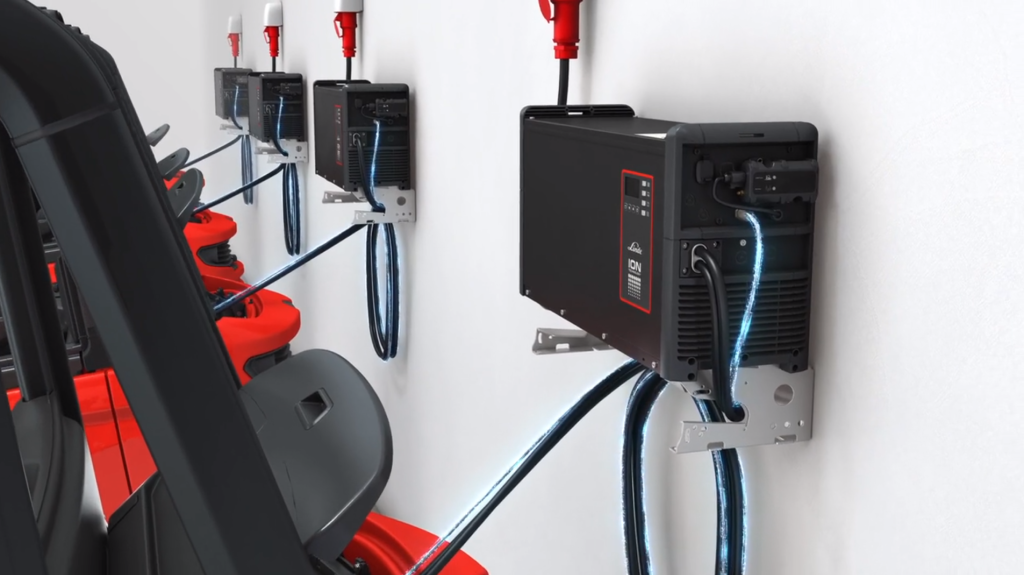
The BMS monitors charging and automatically shuts off when charged.
Not easily. Lithium-ion batteries have a Battery Management System (BMS) that monitors charging and automatically shuts off when charged. This safeguards against overcharging and provides secure charging at all times.
Do lithium-ion forklift batteries wear out with age?
Yes, as with any battery, lithium-ion batteries lose their capacity over time. The majority provide 2,000 to 3,000 charge cycles, with top-of-the-line units offering as many as 6,000 cycles. With time, you’ll experience shorter runtime, but lithium batteries perform and last longer than lead-acid ones.
Can a lithium-ion battery be left on the charger?
Yes. You can store a lithium-ion forklift battery on the charger without any damage. The BMS prevents the battery from charging when full, so there is no need to worry about overcharging or memory effects.
Can I deep discharge a lithium-ion forklift battery?
Although lithium-ion batteries tolerate deeper discharges than lead-acid ones, it’s not a good idea to drain them to 0% regularly. The occasional deep discharge is okay, but the constant over-discharging will shorten battery life. It’s advisable to maintain your battery charged and refrain from draining it completely.
How do I prolong the life of my lithium-ion forklift battery?
To maximize your battery, consider the following suggestions:
- Avoid high heat or cold when in service and storage.
- Use the correct charger and charge as directed.
- Do not tamper with the battery components.
- Clean and inspect for damage every so often.
These are the habits that will keep your battery healthy and running well for many years to come.
What shortens a lithium-ion forklift battery’s life?
The biggest culprits are:
- High temperatures
- Routine full discharge
- Incorrect charging procedures
Staying within the suggested temperature range and following care practices will go a long way in protecting your investment.
Can a lithium-ion forklift battery last 20 years?
Some manufacturers suggest it can be done, but most lithium-ion batteries last between 10 to 15 years, depending on usage and maintenance. In optimal operating conditions and with proper charging habits, they can deliver excellent long-term performance, sometimes up to two decades in low-use applications.
8. Why RIGO Lift Recommends Lithium for Modern Operations
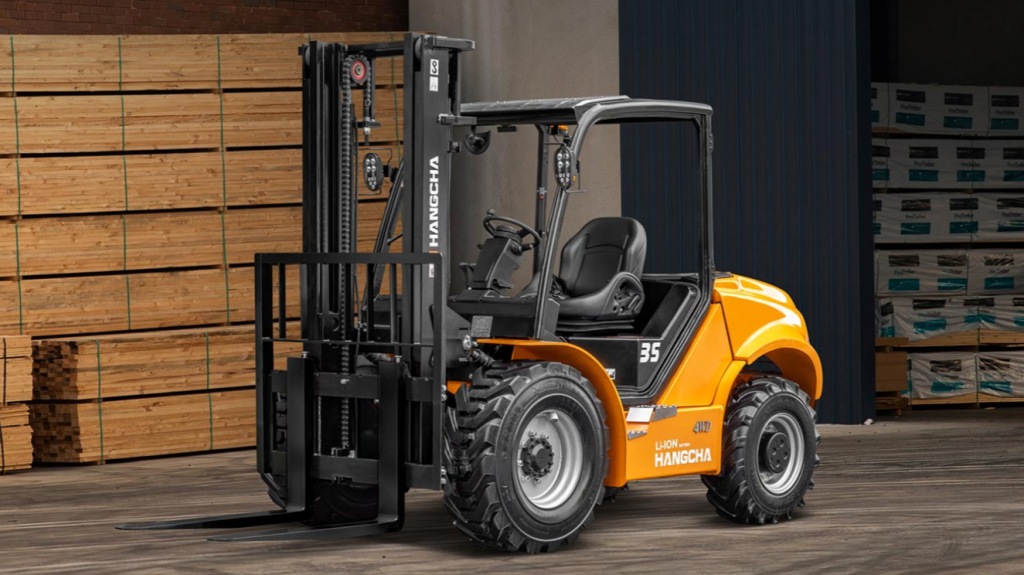
Lithium-ion batteries offer you several advantages over the older lead-acid batteries.
Lithium-ion batteries offer numerous advantages that make them a great choice for modern businesses to increase efficiency and productivity. At RIGO Lift, we believe that employing lithium technology is a sound decision for businesses, with the added benefit of tariff-free Hangcha lithium forklifts and better pricing. Here’s why we recommend lithium-ion batteries for modern operations:
Greater Efficiency with Lithium-Ion Forklift Batteries
Lithium-ion batteries offer you several advantages over the older lead-acid batteries, foremost when recharging and operating:
- Opportunity Charging: Lithium-ion batteries can be charged in short 15-30 minute segments, referred to as opportunity charging. This flexibility allows forklifts to be topped off during lunch or when idle, making them appropriate for multi-shift operations.
- Longer Life: Lithium-ion batteries provide longer life between charges, adding up to greater overall runtime on your forklifts versus lead-acid batteries.
- Smooth Discharge Curve: Lithium-ion batteries produce a smooth voltage curve even when approaching full discharge, providing more consistent power right through the end of the shift.
- Quick Charging: Lithium-ion batteries take less than 2 hours to fully charge and don’t need a cooling-down period like lead-acid batteries, reducing downtime substantially.
These benefits result in higher productivity and throughput, making lithium-ion batteries a great investment for applications that demand high efficiency.
Increased Efficiency and Energy Storage
Lithium-ion batteries are much more energy-efficient than lead-acid batteries, conserving electricity costs and overall efficiency:
- Energy Retention: Lithium-ion batteries waste very little energy when charging and discharging, with some systems retaining as much as 99% of the energy input, making them incredibly efficient.
- Higher Energy Storage: A lithium-ion battery stores 4 times the energy stored in a lead-acid battery and utilizes 30% less energy, powering multi-shift operations easily.
This efficiency in energy results in reduced cost and the ability to power more operations with fewer resources.
Less Maintenance Needed
Lithium-ion batteries require far less maintenance than lead-acid batteries, which makes them a less hassle option for businesses to manage
- No Watering Needed: Unlike lead-acid batteries, lithium-ion batteries require no frequent topping up with water, reducing labour and maintenance costs.
- Sealed Cells: Lithium-ion batteries are fully sealed, so no cleaning or equalizing charging, and less opportunity for battery failure.
- Less Downtime: With lithium-ion batteries, you need not take out or replace batteries frequently, since they are designed to remain within the forklift while operational.
Less need for maintenance saves time and costs, allowing businesses to streamline operations.
Perfect for Multi-Shift Operations
Lithium-ion batteries are particularly ideal for multi-shift operations or operations requiring uninterrupted uptime:
- Fast Charging: Lithium-ion batteries charge very quickly—typically in under 2 hours—and can be recharged during break times, allowing forklifts to stay on the road longer without interference.
- No Cooling Time: Lithium-ion batteries do not require cooling following a charge, which eliminates the prolonged downtime associated with traditional batteries.
- Single Battery Per Forklift: When using lithium-ion batteries, you can typically use a single battery per forklift, whereas lead-acid forklifts need multiple batteries to achieve equivalent operating hours.
This is particularly suitable for businesses with high-demand, 24/7 operations.
Better Safety
Lithium-ion batteries offer enormous safety advantages over lead-acid batteries:
- No Toxic Materials: Lithium-ion batteries lack the toxic sulfuric acid and lead that make lead-acid batteries unsafe to handle and store.
- Closed System: Lithium-ion batteries are closed, eliminating the dangerous maintenance chore of watering and reducing the risk of electrolyte spills, toxic gases, and sulfation.
- No PPE Needed: Unlike lead-acid batteries, lithium-ion batteries do not require personal protective equipment (PPE) during maintenance, which improves warehouse safety.
This makes lithium-ion batteries a more efficient and safer alternative for warehouse operations.
Fewer Charging Infrastructures Required
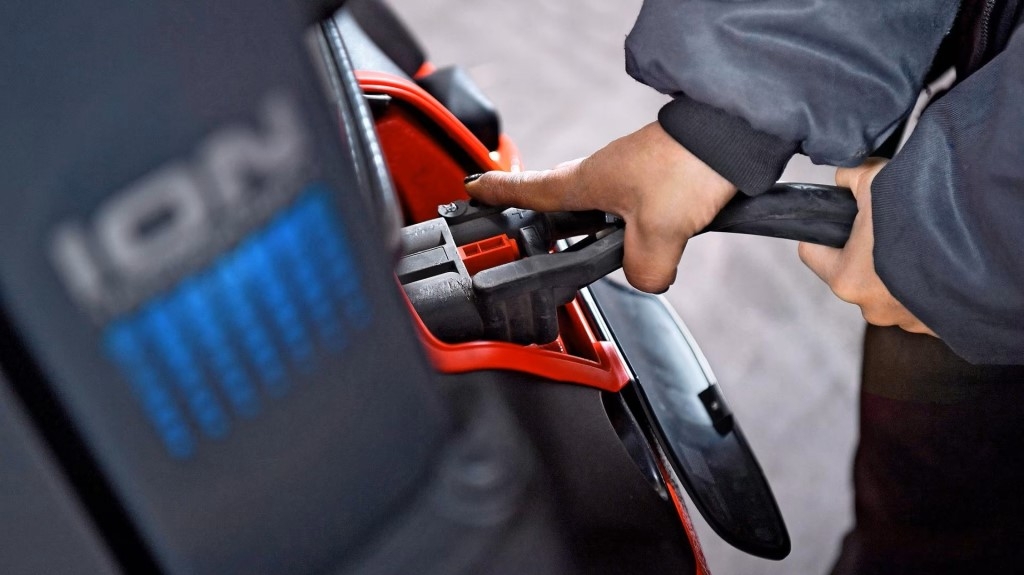
If you run multiple shifts, a lithium-ion battery can be cost-efficient and space-saving.
Lithium-ion batteries simplify your operation with fewer resources required for charging and storing:
- Less Space-Requiring Charging Equipment: Lithium-ion battery chargers are smaller and more efficient than lead-acid battery chargers, requiring less space and reducing infrastructure cost.
- No Requirement of Additional Batteries: As lithium-ion batteries require no additional batteries for battery replacements or storage, which is normally required for lead-acid batteries if there are shifts, lithium-ion battery use can be cost-efficient and space-saving.
Improved Return on Investment
Lithium-ion batteries have a greater return on investment (ROI) compared to lead-acid batteries since lithium-ion batteries have a longer lifespan and are less expensive to operate:
- Longer Lifespan: A lithium-ion battery lasts for 2,000 to 3,000 cycles, a much longer duration than a lead-acid battery, which lasts for approximately 1,500 cycles.
- Fewer Downtimes: Opportunity charging and shorter charging times reduce downtimes, keeping your fleet more productive as a whole.
- Lower Long-Term Costs: Although lithium-ion batteries are more expensive initially, their long life and minimal maintenance translate into massive cost savings over the long run.
With lithium-ion batteries, you can expect a strong ROI within just 36 months of service, thanks to their high-quality, efficient, and less-maintenance nature.
Hangcha Lithium Forklifts: Tariff-Free and Affordable
RIGO Lift sells Hangcha lithium forklifts that are tariff-free. With outstanding prices and the added advantage of having no tariffs, they prove to be perfect for companies wanting to implement the best forklift technology at an affordable price. Hangcha’s lithium-ion forklifts provide you with superior technology as well as a good return on your investment.
9. Conclusion
In summary, the choice between lithium-ion and lead-acid forklift batteries comes down to key differences in performance, cost, safety, and maintenance:
Lithium-ion batteries offer faster charging, better energy efficiency, and require less maintenance compared to lead-acid batteries.
Lithium-ion technology supports multi-shift operations with quick charging and opportunity charging, while lead-acid batteries often need multiple units to keep forklifts running throughout the day.
In terms of safety, lithium-ion batteries are sealed and safer to handle, unlike lead-acid batteries, which involve more hazardous materials and require personal protective equipment (PPE) for maintenance.
Ultimately, your decision should depend on your fleet needs. If you have a high-demand, multi-shift operation, or are looking to minimize maintenance costs and downtime, lithium-ion might be the right choice for your business.
Contact RIGO Lift to find the right forklift solution for your operation. Our team is here to help you choose the best technology to boost your productivity and ensure the safety and efficiency of your fleet.
Looking for a Forklift Dealer You Can Trust? Contact Ri-Go Lift
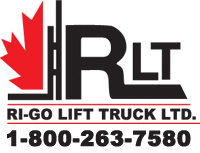
Since 1977, Ri-Go Lift Truck has been serving customers in Ontario and Quebec with everything they need for material handling. We are committed to providing you with quality service and a high level of customer satisfaction.
We are your authorized dealer for the following top brands:
- Linde Lift Trucks, Power Pallet Trucks, Tow Tractors and Stackers
- Hangcha Forklifts Full Lineup of Electric & IC Equipment
- Blue Giant Lift Trucks and Pallet Movers
- Komatsu Forklifts and Reach Trucks
- Mariotti Lift Trucks – The Worlds Smallest Lift Truck
- Baoli Lift Trucks
- Advance Sweepers and Scrubbers
- Skyjack Genie Booms and Scissor Lifts

In addition to our authorized distributorships, we can also provide you with:
- Large selection of used forklifts
- Operator Training Department – open 7 days a week
- Parts Departments – over 1.4 million dollars of parts on hand for all makes and models
- Service Department – highly trained technicians
- Leasing and Rentals
No matter what your material handling needs are, we can help. Contact us today to let us know how we can be of service.
What Our Customers Think…
“I’ve been using RIGO Lift for the last 3-4 years now for my equipment rental needs. They have a fantastic crew working together and they are VERY efficient and reliable as a whole. Whenever I need electric equipment which is hard to come by, I know they are always able to provide. Their equipment is rare to breakdown because they provide machinery that is well kept and in good condition. I definitely recommend you reach out to Steve and the team because you will not be disappointed!”– Heloise Vieira



